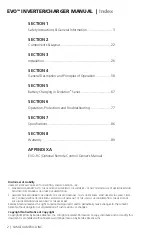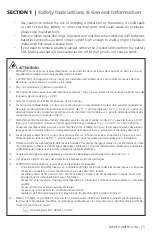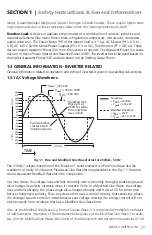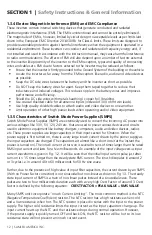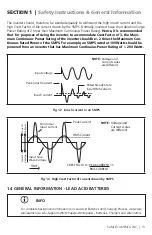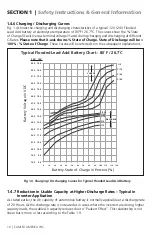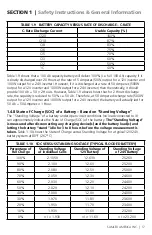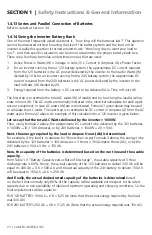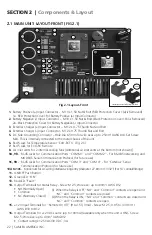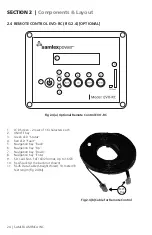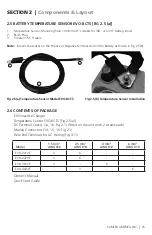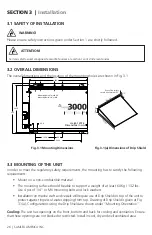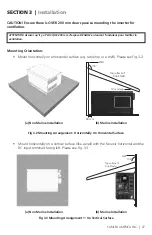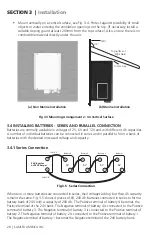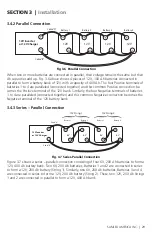
14 | SAMLEX AMErICA INC.
Lead-acid batteries can be categorized by the type of application:
1. Automotive service - Starting/Lighting/Ignition (SLI, a.k.a. cranking), and
2. Deep cycle service.
Deep Cycle Lead Acid batteries of appropriate capacity are recommended for powering of inverters.
1.4.1 Deep Cycle Lead Acid batteries
Deep cycle batteries are designed with thick-plate electrodes to serve as primary power sources,
to have a constant discharge rate, to have the capability to be deeply discharged to up to 80 %
capacity and to repeatedly accept recharging. They are marketed for use in recreation vehicles
(rV), boats and electric golf carts – so they may be referred to as rV batteries, marine batteries
or golf cart batteries. Use Deep Cycle batteries for powering inverters.
1.4.2 rated Capacity Specified in Ampere-hour (Ah)
battery capacity “C” is specified in Ampere-hours (Ah). An Ampere is the unit of measurement for
electrical current and is defined as a Coulomb of charge passing through an electrical conductor
in one second. The Capacity “C” in Ah relates to the ability of the battery to provide a constant
specified value of discharge current (also called “C-rate” - see page 17) over a specified time in
hours before the battery reaches a specified discharged terminal voltage (Also called “End Point
Voltage”) at a specified temperature of the electrolyte. As a benchmark, the automotive battery
industry rates batteries at a discharge current or C-rate of C/20 Amperes corresponding to 20 Hour
discharge period. The rated capacity “C” in Ah in this case will be the number of Amperes of current
the battery can deliver for 20 Hours at 80ºf (26.7ºC) till the voltage drops to 1.75V / Cell. i.e. 10.5V
for 12V battery or 21V for 24V battery. for example, a 100 Ah battery will deliver 5A for 20 Hours.
1.4.3 rated Capacity Specified in reserve Capacity (rC)
battery capacity may also be expressed as reserve Capacity (rC) in minutes typically for
automotive SLI (Starting, Lighting and Ignition) batteries. It is the time in minutes a vehicle can
be driven after the charging system fails. This is roughly equivalent to the conditions after the
alternator fails while the vehicle is being driven at night with the headlights on. The battery
alone must supply current to the headlights and the computer/ignition system. The assumed
battery load is a constant discharge current of 25A.
reserve capacity is the time in minutes for which the battery can deliver 25 Amperes at 80ºf
(26.7ºC) till the voltage drops to 1.75V / Cell i.e. 10.5V for 12V battery or 21V for 24V battery.
Approximate relationship between the two units is:
Capacity “C” in Ah = reserve Capacity in
rC minutes x 0.6
1.4.4 typical battery Sizes
Table 1.7 shows details of some popular battery sizes:
tAbLe 1.7 PoPuLAr bAttery SiZeS
bCi* group
battery Voltage, V
battery Capacity, Ah
27 / 31
12
105
4D
12
160
8D
12
225
GC2**
6
220
* battery Council International; ** Golf Cart
SECTIOn 1 |
Safety Instructions & general Information


